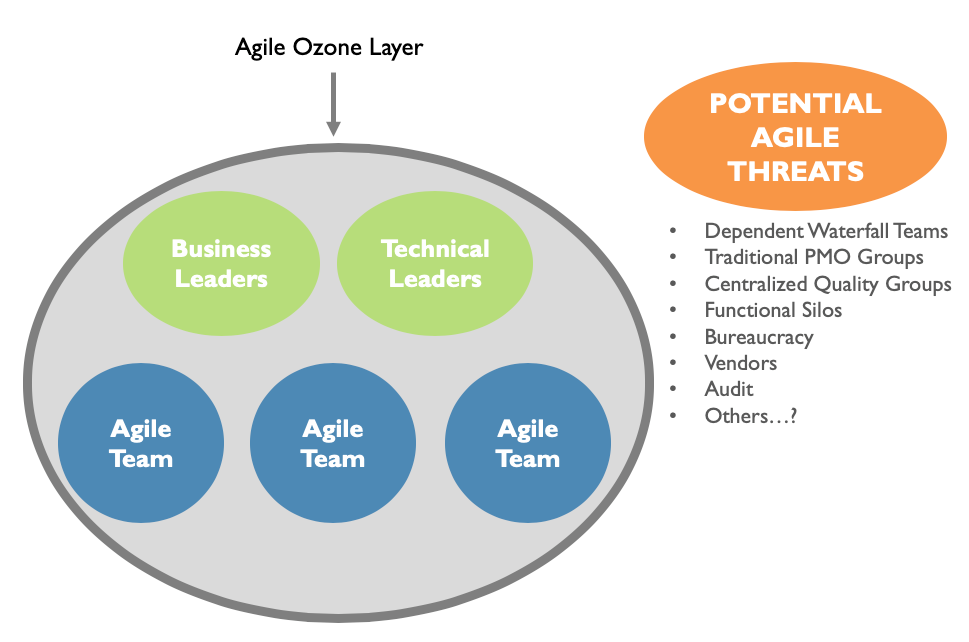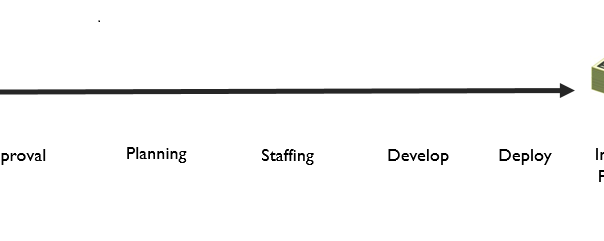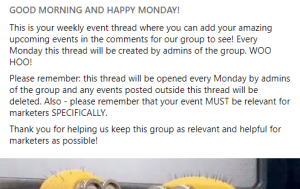What is the Agile Leader Role during an Agile Transformation?
Agile Transformations are a popular activity right now. If you are an agile leader, you may be wondering what is the role that you play in an Agile Transformation.
This 2-part article begins with what is meant by Agile Leader and Agile Transformation and why organizations today are pursuing Agile Transformation. Part one also explores in detail the Agile Leaders role and how they lead agile transformations with 4 key activities.
Part 2 focuses on 8 Key Characteristics of Agile Leaders. Finally, the article serves as a blueprint for Agile Transformation.
What is an Agile Leader?
An agile leader is a person who fosters agile ways of thinking and working, creates an environment where teams can do their best work, and champions agile throughout their organization.
Definitions of Agile Leaders vary widely and this is an area where certification is new and evolving. The Scrum Alliance describes their Certified Agile Leader Training as helping leaders be effective in complex, uncertain and rapidly changing environments. It seems that this describes most leaders today!
What is Agile Transformation?
An Agile Transformation is the process of transforming the organization structure and culture to one that fosters true business agility. This impacts organizational structures, and the way work is completed, managed and measured.
This is in contrast to a more limited exercise of an Agile pilot or a transition to Scrum, which is a small experiment constrained in one part of the organization. The IT department can implement Scrum but that doesn’t make it an Agile Transformation.
There is a significant difference between those that are now “doing agile” and the idea of actually “being agile”. Agile Transformation is a deep change in mindset and organization culture.
Why Do Organizations Pursue Agile Transformation?
Great question. Many organizations today are running Agile pilots or are attempting an Agile Transformation. They want the flexibility and business agility that Agile methods promise. But many of those organizations pursuing agile transformation lack a crisp and clear understanding of why. Often when I ask why, I get a mix of reasons:
- We want to introduce Scrum (technically this is a what, not a why)
- Get more done with less
- Respond to Changing Priorities
As we will explore a little later, having a very clear “Why” is really important. John Kotter includes both vision and a sense of urgency as two of his eight essential elements of a change program. See Kotter’s Leading Change.
By the Way, Agile Transformation Isn’t Easy
Now that you’ve read this far, I guess it is safe to let you know this key insight. Success with an Agile Transformation is anything but easy. Most organizations have attempted an Agile Transformation at least once and frequently more. And many have failed. So, going in without a clear sense of what the leaders hope to achieve, or without a realistic plan or with only weak support is almost certain to result in failure.
Leaders may say they want to be Agile the same way they say they want to be thinner or better looking. That overlooks all the hard work required.
What is the Role of the Leader in an Agile Transformation?
Leaders play a key role in the Agile Transformation. In many organizations, there is one key person who serves as the Agile Transformation Leader. It is only with a solid understanding of this critical role that the transformation will succeed and deliver the promised benefits. So, let’s explore what it means to be an Agile Transformation Leader.
The following major sections provide additional details:
- Four Key Things Agile Leaders Do During an Agile Transformation – this includes establishing teams, shaping the environment, coaching, and leading organizational change.
- What Characteristics Do Agile Leaders Need
- How Leaders May be the Impediment to Transformation
- Action Steps for Agile Leaders
Enjoy the Journey!
Four Key Agile Leader Activities during Agile Transformation
Over the last 6 years, I have worked with many clients who are running Agile Pilots or attempting an Agile Transformation. There is a wide variance in the approaches that these leaders have taken and a wide variance in the results.
Which got me to wondering whether leaders really understand their role in an Agile Transformation or the importance of their leadership during this organizational change.
I don’t know if there is one perfect way to approach this. I do know that there are a handful of things leaders did that were common to all the successful Agile transformation. I’ve grouped those things into the following 4 categories:
- Establish High-Performing Teams
- Shape the Environment for Success
- Coach
- Leaders Lead Organizational Change
1. Leaders Establish High-Performing Teams
Perhaps one of the most important things that the Agile Leader does is to establish high-Performing teams. But what is included in that?
Create Effective and High Performing Teams
I’ve written extensively on how to create high performing teams. I believe that there are 7 key things that make teams effective and lead to high performance. Effective Teams are:
- Appropriately Sized – Most Agile experts believe that 5-9 is the optimal size.
- Cross Functional & Capable of End-to-End Delivery – Rather than being a team of people with just one skill, the team needs to have all the skills necessary to deliver the solution without handing off to another team. This often involves developing what some people call T-Shaped skills sets.
- Dedicated (No Fractional Resources) – This one is really tough for most organizations. They don’t believe that they have enough people to dedicate to teams. Duh! That means you have too many concurrent projects. Just re-assigning your best people over and over on multiple projects doesn’t change the fact that you have too much work. That overallocation of people is going to cause multi-tasking and context switching. Combine that with too much work in process, and you have significantly DECREASED the amount of work you will get done.
- Long-standing
- Self-Organizing – Teams should be left to self-organize.
Eliminate Handoffs
Handoffs are a key area of risk and knowledge scatter. Great leaders recognize the difficulties with handoffs and establish teams so that handoffs are reduced or eliminated. This is closely tied to the cross-functional aspect mentioned above. Unless you build teams that cross organizational silos, you will have to have handoffs to accomplish the work.
Tip: Use Value Stream Mapping to identify your value chains that go from idea to implemented in production. In Lean terms, this is called Concept to Cash. Map out your current state and identify all the various people that are required to create value for your customers. Identify the handoffs and wait states, and then work to eliminate those.
Encourage Team Focus
Team focus is related to having dedicated team members. If team members are spread across multiple teams, those team members will not be as dedicated and will be less likely to accomplish their goals. They will also waste more time participating in meetings and writing status emails about the work that they don’t have time to do because they are in meetings and writing status emails.
It is better to create smaller, focused teams who can be 100% dedicated. Most of the arguments for why this is not possible reflect past policies that were aimed at cost reduction or retention of specialized resources. These will conflict with focused teams (and undermine overall productivity and agility).
Plan by Teams not by Individuals
Great leaders stop planning by the person. Gone are those spreadsheets that show a list of projects cross referenced against people with various percentage assignments. Instead, agile leaders establish long-standing or persistent teams and then they bring the work to the team.
Agile Leaders use the team’s actual velocity to forecast how much work can be accomplished. This turns out to be much more predictable than using resource allocation to traditional project plans.
Leaders Protect the Agile Teams
One of my favorite examples of good leadership comes from a large financial services client. The leaders in this organization created an Agile Champions team whose mission was to nurture the new Agile teams and to protect them from the broader organization. Rather than call themselves the Agile Champions, they called themselves the “Ozone Layer” because of the way they protected the teams.

They recognized that introducing Agile and Scrum was a change that the organization might fight or reject. They described the forces in the organization that were opposed to the change to Agile as “agile-antibodies” and recognized the need to shield the teams from those forces.
These agile-antibodies – things like bureaucracy or political infighting – could attack and bring the Agile teams to their knees if left unchecked. So, the leaders formed this protective layer called the Ozone Layer around the teams that kept the agile-antibodies out.
2. Shape the Environment
Great leaders create the context where teams can do their best work. Rather than lament “the way things work around here”, Agile Leaders will actively work to improve things. That is the focus of the following section.
Leaders Focus on Removing Organizational Impediments
Every organization has impediments or friction that slows work down and saps productivity. Most organizations have grown so accustomed to living with them and don’t even see them anymore. Impediments slow things down, reduce morale and productivity and can become a huge waste of people’s life energy.
Some examples of organizational impediments include:
- Taking on Too Many Projects; Assigning People to Multiple Teams
- Functional Silos and Fiefdoms
- Onerous and Error-prone Manual Processes
- Performance Review and Compensation Practices that Reinforce Hero Behavior and Undermine Teamwork
- Over-allocation of People to Projects / Lack of Slack
- Unrealistic Project Budgets and Deadlines
- Access to proper Test Environments
- Lack of Technical Practices and Automation Tools like test automation or continuous integration
Great leaders help the teams by allocating resources and attacking these types of impediments and thereby freeing up the teams to do their best work. Many will create a backlog of these impediments and begin to systematically address them.
Here are some other ways that leaders can remove friction:
Reduce bureaucracy – Many organizational processes go unchallenged, in particular those that involve approvals and decisions. Leaders can find ways to identify those that slow teams and then eliminate them or push decision-making down.
Similarly, if there are approval processes, can managers get out of the way and let teams decide?
Understand & continuously improve how work gets done
Earlier we mentioned the value stream map and how leaders might use that to understand the time it takes to go from idea to production. That time is called cycle time and for most organizations, that is anywhere from 12 months to over 24 months. That doesn’t sound very agile, does it?

What is the cost of that time? One way to measure that is the cost of delay. If each new idea takes on average 18 months, what is the value lost if a competitor launches a feature in less time? What is the value of a 1-month reduction in delay? These are considerations that leaders need to make.
Contributing to that overall ‘concept to cash’ timeline is not just development, where most people tend to focus. In many organizations, development by a technology team may only be 3 of the 18 months. The rest of the delay is due to overhead and bureaucracy in planning, taking on too much work at the same time, and lack of automation or long release cycles after things have been built.
They key here is not that there is one solution for every organization. It is for leaders to work with teams to understand how the work gets done, or more accurately, how customer value is created in the organization. Without an awareness of the starting point, improvement is not possible.
Create a Productive Physical Environment
How well does your organization support Agile Ways of Working? Is there transparency of what people are working on? Are the agile teams actually able to sit and work face to face?
Many organizations set up team spaces or collaboration rooms to provide a place for agile teams to focus and work together. Studies have shown that these team rooms double team productivity. Nevertheless, many organizations resist the idea of putting teams together.
This is also directly related to not assigning people to multiple teams. And it relates to building teams that are co-located vs. distributed all over the globe.
Co-Locating Teams provides the following:
- Facilitates frequent interactions, knowledge sharing, clear status
- Avoids loss of productivity to go somewhere to meet
- Leverage information radiators & osmotic communications
Align HR to Agile Ways of Working
In most organizations, the human resources function needs to be changed to align it to agile ways of working. Some of the key considerations include:
- Hiring – Agile organizations strive to hire people who fit in with the Agile culture and possess T shaped skill sets. They also will include the Agile team in the interview process, rather than have a manager decide who gets put on the team.
- Reviews – Performance reviews are expanded to include team-based measures vs. simply looking at individual performance. And reviews are more of an ongoing conversation rather than an end of year discussion that affects pay and bonus.
- Job Descriptions and Career Paths – Perhaps the most dramatic change here is a shift to allow people to develop their skills and expertise and make more money without becoming managers. We want to provide more flexibility in roles and avoid using titles as motivators. Finally, we want to provide opportunities and incentives for learning and growth.
- Rewards – As mentioned above, we should align rewards to teamwork, not individual performance. In addition, we want to reward learning and skill development rather than promotion to management. Finally, we should tap into intrinsic motivation by fostering autonomy, mastery, purpose.
Work Across Silos
The great leaders that I saw succeed with Agile Transformations were also excellent collaborators. They built bridges across the organization, they sought input and ideas from everyone, and they allowed others to participate in decision-making.
They modeled the behavior that they wanted their agile teams to follow. Rather than letting silos impede the productivity and responsiveness of the organization, they reached across the silos and encouraged communication and cooperation. This level of collaboration is absolutely necessary to get the change to stick.
3. Coach People and Teams
Great leaders become great coaches and see their role as not only inspiring people but coaching them to success. Key Aspects of coaching include the following:
- Moving from Commanding to Coaching
- Coach Teams to Solve Their Own Problems
- Ask Powerful Questions
- Develop Empathetic Listening Skills
Agile Leaders Need to Avoid Command and Control Approaches
There is one leadership anti-pattern and that is the command and control leadership style. Command and control is easy and has succeeded for years. However, it increasingly fails with knowledge workers.
Are you a command and control leader? Let’s use the short survey below to quickly measure your level of command and control-ism. As you read each question, decide if you could answer each with a yes or a no. Think about work and what how you would respond for the majority of time.
- Do you feel that you need to monitor your team members so that they don’t slack off?
- Do you believe that you generally know what is best, and willingly offer solutions and advice?
- Do you tend to interject yourself into problem solving, even when you are not invited to get involved?
- Do you try to make the results conform to your idea of what the results should be?
- Do you feel uncomfortable when others are in control, and you are not?
- Do you feel uneasy by the idea that your employees or team may operate fine without you?
- Do you feel the need to be involved in the details and decisions to reduce the risk of the project failing or having a misstep?
- Do you feel solely and personally responsible for the success and failure of the people you lead?
- Do you tend to step in or override others to protect them from possible mistakes or the consequences of their decisions?
So how did you do? If you scored three or fewer Yes responses, congratulations, you are doing quite well. If you scored four to six Yes responses, you are doing well but could be doing better. And if you had more than 6 yeses, empowering and trusting your team is going to be difficult but could have huge payoffs.
Learn and Grow with This Exercise
By the way, if you really want to get an accurate feel for how you are doing as a leader, use this PDF of the above questions to survey your employees, team members, other subordinates and peers. Provided your employees feel comfortable giving you feedback, you will come away with a much more accurate view of how much you rely on command and control. Just download and print the form below.
Command and Control Litmus Test PDF
Leaders Coach Team Members to Solve their own Problems
I had an interesting experience at a company recently where I observed that the managers were micro-managing their employees. This extended to even how their employees completed the exercise in our Agile Training Class!
I wrote about this in Stop Hovering over Your High-Performance Teams. The bottom line is step back from the teams. Don’t tell teams what to do or hover over them. Instead, let them figure it out, even if that means making mistakes which are necessary for growth and maturity. More about mistakes in a moment.
And on your part, focus on the more strategic parts of the job you were hired to do. If you are busy directing the employees, you probably aren’t focused on the things we are outlining here in this blog.
Agile Transformation Leaders Ask Great (Powerful) Questions
One of the most underutilized tools in the Agile Leaders toolkit is the question. Asking great questions is a powerful way to lead an Agile Transformation and nurture high performing teams.
Done well, this style of leadership moves from directing, telling and commanding to one of curiosity, learning, and adaptation. And it is a style that anyone can learn to use effectively.
Develop Empathetic Listening Skills
If you are going to ask great questions, you need to be there to listen. So many of us struggle with listening because we are ready to jump in and solve the problem or share how we solved it previously. Rarely are we supporting people when we are telling them the answer.
A better approach is to listen with empathy. We do this by suspending our own judgment and resisting the impulse to give advice. We might respond with something like “that sounds challenging” or “what do you think you should do?”.
Leaders Set High Expectations
Great leaders will expect great things from their people. This in itself can become a self-fulfilling prophecy. If leaders have done their part and gotten the best people on the Agile teams, they can turn them loose and expect great things. Generally, leaders with high expectations are Theory Y managers.
They think the best of people and believe that if they provide the right conditions, people will grow, accept a challenge and outperform their expectations. These leaders use coaching and mentoring skills and ask powerful questions to help people and teams succeed.
Leaders Make it Safe to Fail
It may sound odd to mention that leaders make it safe to fail. The reality is that without a safe to fail environment, innovation and creativity will be stifled. Learning and growth will also slow unless people see and experience safety.
Leaders can start by sharing their own failures. When leaders are vulnerable about their own failures, they show that it is OK to make mistakes and fail occasionally. Teams that fail and recover are stronger than those that do not. It is only by making it safe to experiment will leaders unleash the innovation and creativity of their teams.
Of course, you don’t want the company crashing or key customers lost to mistakes. A safe to fail environment is not one where people screw up on purpose. And leaders will often need to establish an appropriate “blast radius” for failure so that individuals and teams don’t inadvertently put the company at risk.
4. Lead Organizational Change
Agile leaders are the key to the organizational change to Agile. Here are some tools and approaches they might use:
- Kotter Model for Organizational Change
- The Innovation Adoption Curve
- Leaders Go First – Agile Champions Team
- Communicating Vision and Celebrating Wins
- Satir Change Process Model
- Transformation Roadmaps
- Stakeholder Surveys
- Changing Organizational Culture
- Culture Assessments
Kotter Model for Organizational Change
It’s important to appreciate the difficulty of introducing lasting change in organizations. The status quo is a formidable opponent.
In his book Leading Change, John Kotter outlines 8 elements of a successful change program. Leveraging this model will help the organizational change effort succeed.
- Establish a Sense of Urgency for the Change
- Form a Powerful Guiding Coalition
- Develop a Vision and Strategy for the Change
- Communicate the Vision
- Empower Others to Act on the Vision
- Generate Quick Wins
- Consolidate Gains & Produce More Gains
- Anchor the Change
Details on how to do each of these is beyond the scope of this blog. However, we will touch on three that are critical – Urgency, Coalition and Vision.
Establishing a Sense of Urgency for Change
Establishing a sense of urgency is a critical part of any agile transformation campaign.
The challenge is, most organizations don’t have a clear “burning platform” that they can identify. They are like the proverbial frog in the water that is slowly being heated up to boiling.
Ironically, most organizations today are facing increased global competition unlike that of any other time period. One doesn’t have to look far for companies who once dominated their industry and since have been either shuttered entirely or in serious decline. Blockbuster, Borders Books and Kodak are three that come easily to mind. Companies like Uber, Airbnb and Amazon are disrupting new industries in relatively short periods of time. It is only the nimblest, err Agile Companies that are going to survive and thrive.
Form a Powerful Guiding Coalition
Agile Leaders cannot afford to go it alone. Most form some sort of team to help lead and guide the change efforts. These organizations can take various names – the term “Agile Champions Team” is one that I like the most. Names that I would avoid include Agile PMO and Agile Center of Excellence; they have too much baggage.
Whatever you call it, the coalition should include those who are passionate about Agile. Any early adopters would be good candidates, as would those who have prior experience, training and certification. Most organizations have at least a few people with skills and expertise.
Develop a Vision and Strategy for the Change
The leaders I know that have succeeded with Agile Transformations have been great at developing and casting a vision for the change. They have an end goal for the organization and they help to paint the picture for everyone else in the organization.
They also appreciate the magnitude of the challenge and allocate appropriate resources to make sure that the change can occur.
The vision needs to be a compelling reason for the change to Agile and it needs to be communicated broadly, repeatedly, and in a way that engages the team members and solicits their feedback.
One leader that comes to mind that was good at this, provided training, encouraged widespread experimentation and conducted monthly town hall meetings to recast the vision and get feedback on how things were working.
I have also seen examples where leaders were ineffective in casting vision. A CIO at one client stated at the beginning of a calendar year that by the end of the year, 30% of all projects would be run using Agile. That wasn’t much of a vision, and, he did not champion the vision. He also failed to allocate any resources to that “vision” so the people in the organization struggled to make any steps toward the goal. That is not the vision I am talking about.
Does Your Vision Hold Up to Scrutiny?
Based on what I’ve experienced, I’ve learned to ask questions about the vision leaders have. Here are some examples of questions that I have found helpful.
- What is your end goal, the “Why” of being agile?
- Do you really understand what being Agile means to the organization and culture?
- Have you tried Agile before? If so, what exactly did you try what were the results?
- Do you have the ability to create long-standing teams and then leave the teams alone?
- Who in the organization wants to be agile? Is there a desire from the people and teams doing the work to become more agile? Is this an IT-only initiative or will it span the business?
- How serious are you? Do you have a budget for training and coaching?
- What impediments or obstacles do you anticipate a change like this would encounter?
Questions like this start to give me an idea of how likely it will be that the organization can actually adopt or transform to be agile. Or becoming more agile if they have already begun a transformation.
Note that questions alone are insufficient. I also want to observe and talk with team members who are on the ground to see how engaged and empowered they are. I want to take the temperature of the organization and begin to understand the culture. I want to see if what the leaders say matches what is the reality for those who are closest to the work.
Leaders Go First During the Agile Transformation
In order to effectively cast the vision for the change to Agile, Leaders need to truly understand Agile. Many Agile Transformations run into a brick wall shortly after getting underway. That brick wall is the leadership team and their lack of understanding. You can’t proclaim that everyone else will be agile without starting your own agile journey!
While most leaders will say they want all the benefits of Agile they may unknowingly act in ways that undercut the agile teams. The attitude of some leaders seems to be one of impatience or intolerance of agile approaches.
Going first means learning about Agile and Scrum. Leaders should take the Agile training that the team members will take. They need to understand Lean and Agile Principles and organizational change.
In our next section, we will transition from the things Agile Leaders do, to the characteristics that they need to possess.
In part 2 of this article, we will explore the Characteristics that Agile Leaders Need the Most, and look at one of the most common barriers to agility – leaders!
Originally published here.
Business & Finance Articles on Business 2 Community
(116)






